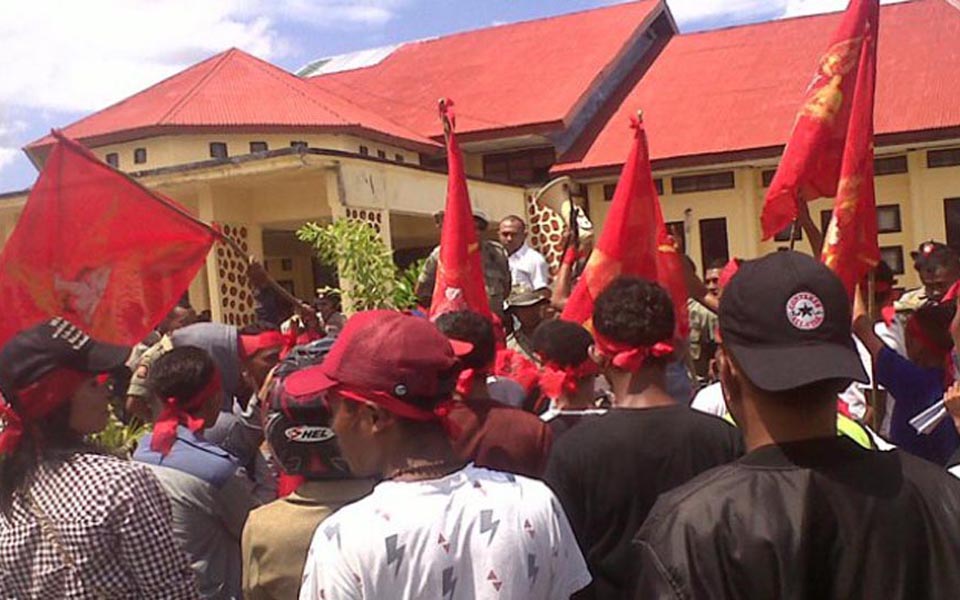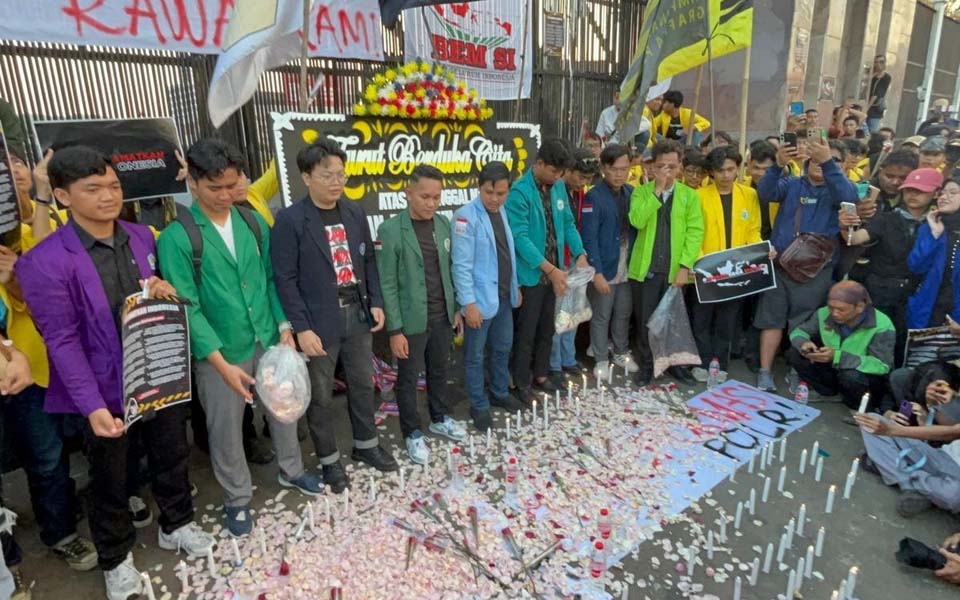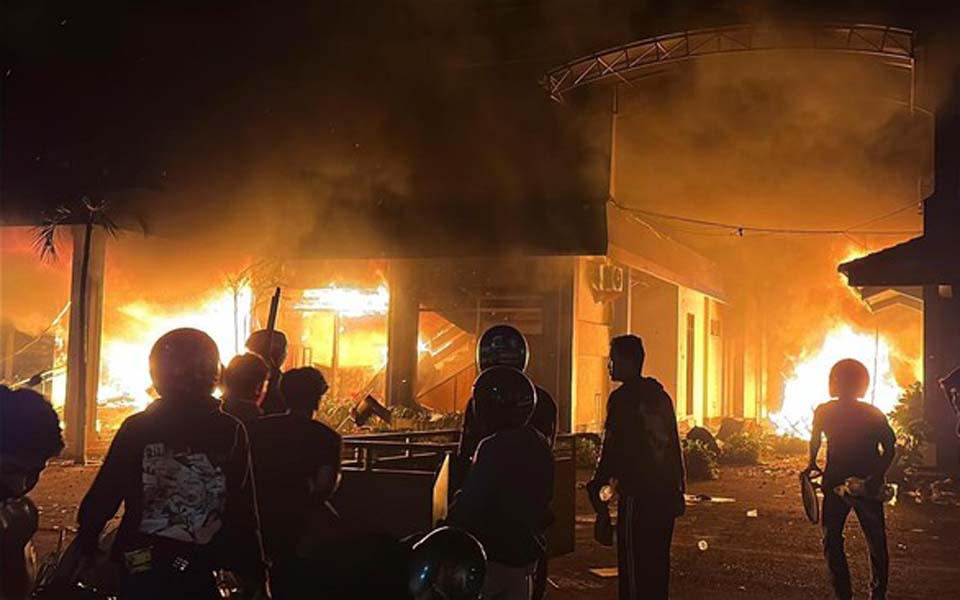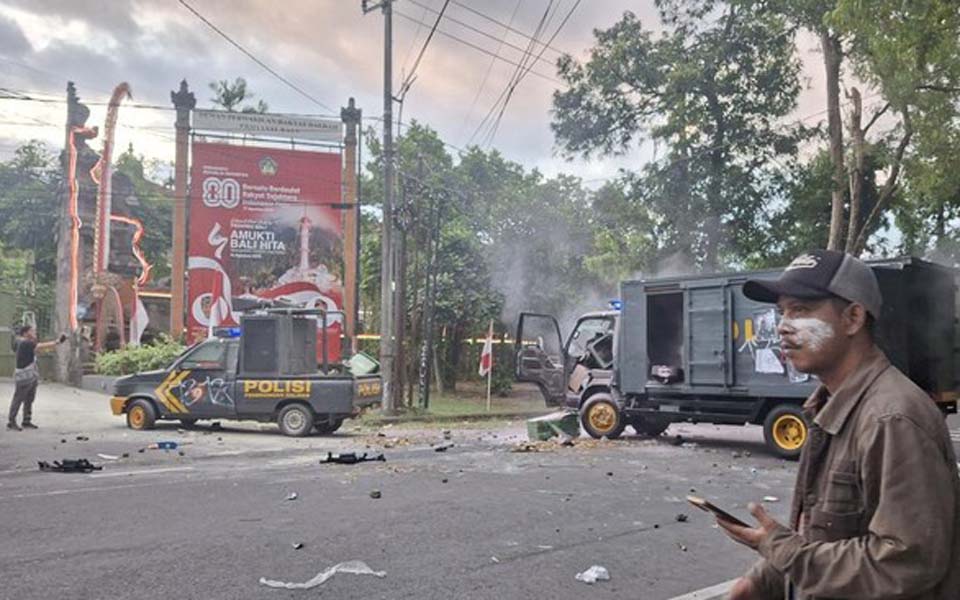Jakarta – Like previous years, 2008 was marked by a variety of actions by students who took to the streets opposing government policies that they believe harm the people.
Only, in concert the approach of the 2009 legislative and presidential elections, so too has the tendency for these student actions to end in clashes and violence.
Not only that, over the last year the tendency for clashes to break out between students themselves – both from the same campus as well as between campuses – has also been widespread. Ironically, gang fights such as this have not just resulted in physical injuries, but have also left behind damage to campus facilities. Not infrequently, these clashes have been caused trivial issues.
This phenomenon has given rise to questions about the direction as well as the spirit of the student movement, particularly when it is placed in the Indonesian political context, the temperature of which is indeed rising in the lead up to the 2009 legislative and presidential elections.
According to North Sumatra University Student Administration President, Fritzen Harianja, actions in which students take to the streets at the moment are more to do with the desire to demonstrate that the movement still exists. “There are no joint issues being struggled over. Students are taking to the streets more because they want to show that students still have a movement”, he said.
An activist from the Politics for the Poor-National Student League for Democracy (LMND-PRM), Eman Sulaiman, also believes that no formula has yet been found to united student actions.
The fragmentation of student groups has not just occurred within the movement, but also over the issues being taken up. Although they are all articulating the interests of the ordinary people, they are also sometimes not of one voice. For example, one group opposes the commercialisation of education, while another is calling for improvements in workers and farmers’ welfare.
This point is also conceded by Andika Syahputra from the North Sumatra State Institute of Islamic Studies (IAIN) Student Senate. According to Syahputra, the triviality of the issues being struggled over has tended to cause the public, media and the government to be “silent” over student actins. “In the end we take the road of anarchy. If there is no anarchy, the media doesn’t cover it. If it’s not covered by the media, the public and the government won’t know about our actions”, he said.
Chaos during protest actions, such as breaking into the House of Representatives building, scuffling with police or blockading roads, according to Sulaiman, represents one of the movement’s tactics. Trough these “excesses” they hope to attract the attention of the public and the government and show that there are crucial issues that have to be confronted together.
One of the coordinators of the National Student Front (FMN) in the Central Java city of Yogyakarta, Dadang Setyabudi concedes that actions by his group can indeed be categorised as severe, such as setting fire to tyres or blockading roads.
The presence of the media, particularly the electronic media, is acknowledged by activists as being a trigger or inspiration for holding rowdier actions. “If it’s carried by the media, what we are articulating can be conveyed. Because of this therefore, comrades sometimes get out of control and do things that will get in the media”, said Khairil Akbar, a Faculty of Social and Political Science student at the Hasanuddin University in the South Sumatra regional capital of Makassar.
He also added however, that protest actions that end in clashes are not always the fault of students. Many clashes are also triggered by security personnel who don’t understand the character of students in Makassar.
Lost role
University of Indonesia sociologist Imam B. Prasodjo, North Sumatra University sociology professor Dr. Badaruddin and education observer Darmaningtyas all agree that the student movement has experienced a leveling off, with students loosing their [central] role after the political situation changed.
“During the periods of the Old Order [of Indonesia’s founding President Sukarno] and the New Order, students became a moral force to push for good governance. Many people depended upon students”, said Prasodjo.
In the era of reformasi, political issues are able to be taken up by many different parties. The emergences of non-government organisations (NGOs) working on issues that are very specific has resulted in the student movement becoming steadily hemmed in. In competing with NGOs that have strong networks, students carry less weight.
“Students are seeing that their actions don’t ever receive a response. If we look at peaceful student actions up until now, they are considered to be just ordinary affairs by the government”, said Badaruddin.
Aside from frustration, said Darmaningtyas, there are also student groups that have indeed chosen severe methods, namely getting involved in clashes in order to attract more attention. This situation then gives rise to a “consciousness” among students, who believe that presence of the mass media can be taken advantage of.
Diplomatic struggle
Arie Dudjito, a sociology lecturer from Gadjah Mada University in Yogyakarta suggests that the student movement undertake a diplomatic method of struggle that will minimalise the risk of violence breaking out, such as through parliamentary channels or civil disobedience. “If violence continues to occur, they will loose the public’s sympathy”, he said.
The Director General for Higher Education at the National Education Department (Depdiknas) Fasli Jalal believes that there are a number of factors that trigger disputes both on campus and anarchy outside of campus. One of these is the systems of cultivating new students, which give birth to traditions of seniority.
Depdiknas has already budgeted adequate funds to improve student activities in 2009, namely providing 2 billion rupiah to a number of higher education institutions to develop entrepreneurship among students. Higher education institutions are also being assisted with activities to develop academic aptitude, academic research and the development of student academic journals. State higher education institutions will also receive 1 billion rupiah in funds to develop student activity units. (INE/BIL/ENG/WER/NAR/REN)
[Translated by James Balowski.]















